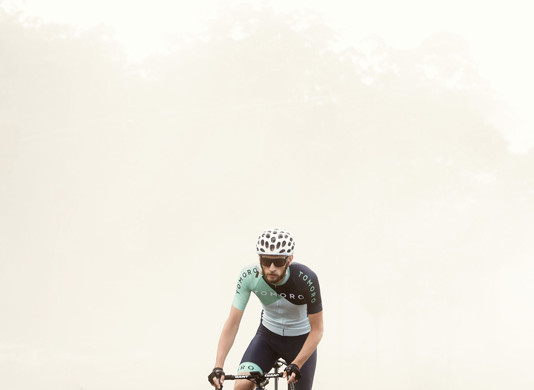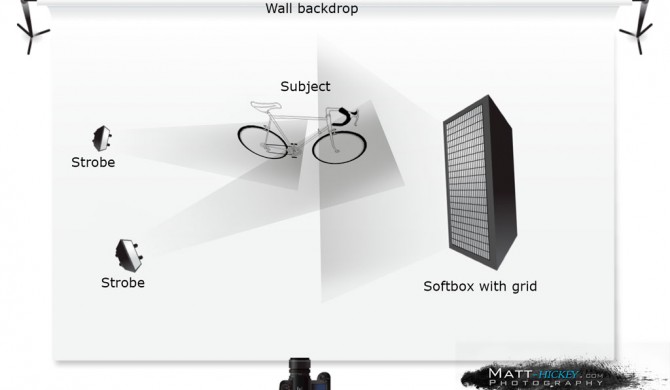13
The owner of Tomoro, a design company, asked me to capture some photographs of his new cycling kit.

Simeon got together some of his cycling mates to show off the new design he created.
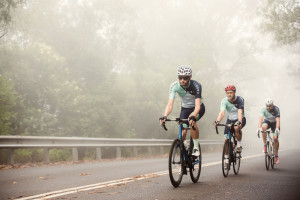
It was a very foggy morning which made for some interesting shots. The challenge was making sure the fog didn’t completely wash out the image, producing a low contrast shot. I quickly spot metered on a face to ensure I had the correct exposure for the subject.
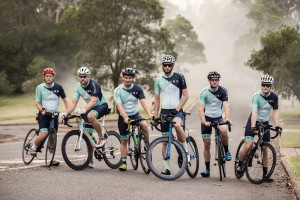
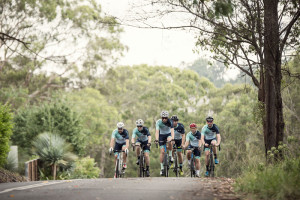

For a camera set to auto mode, it would try and compensate by lowering the over-all exposure to give an even 18% grey value (standard exposure from a cameras perspective), however this would result in my subject being to dark (under exposed). It’s like when you try to get a sunset shot with people in the foreground. If the sunset looks nice, the people are black. This is referred to as a silhouette. I wanted the reverse, the subject exposed correctly and the background over-exposed. This style is referred to as a high key image.
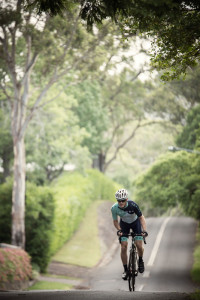
We then moved onto some other sections of the ride where the camera required very different settings. By this stage, the fog had lifted, but the subjects were moving much faster. I changed to centre weighted metering (my standard preference), continuous auto-focus, high speed shooting mode and also a much higher shutter speed to freeze the motion. I also made a choice to widen my depth of field (going from f/2.8 up to f5.6-9) to improve my chances of getting the subject in focus. These settings will typically provide you with a much greater range of usable shots when you get back to office.
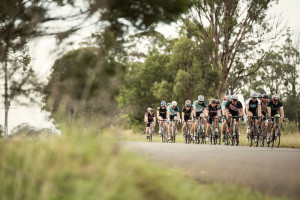
Once we were back at the coffee shop for some candid and staged photos, my settings changed once more. I went back to a shallow depth of field to blur out the background, bringing greater attention to the subject. I also set the camera back to single shot auto-focus, ensuring the crispest images possible for the client.
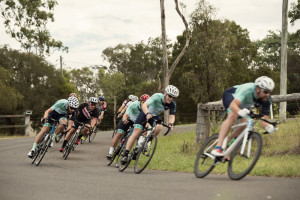
The entire shoot was captured with a 70mm-200mm lens. This allowed for some dramatic close-ups, but also the ability to pull back and get some group shots and wider scenery shots.
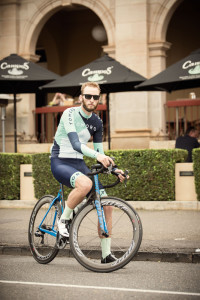
To summarise, the assignment had multiple challenging environments. It just took some thinking to overcome the environment variables, pair that with the cameras technical capability, I was able to produce some exciting images for the client.
20
It was a very quick shoot, done and dusted in about 15mins. That’s pulling up at the location, get the bike out and prepared, setting up camera gear, lighting it, shooting it and then dismantling it all.
I pre-visualised the location I wanted to use with this bike and waited for the right time of day to shoot when the sun was disappearing behind the buildings to cast shadows. My intention was under expose the background by around one stop of light and light the bike with strobes on wireless triggers.
I setup a large gridded soft-box (gridded to stop light from falling onto the background wall) to the right of the subject as my main light, and a bare strobe (zoomed in to the narrowest beam) on the left of the subject. The aim was for a soft light falling over the bike with a defining kicker light from the left.
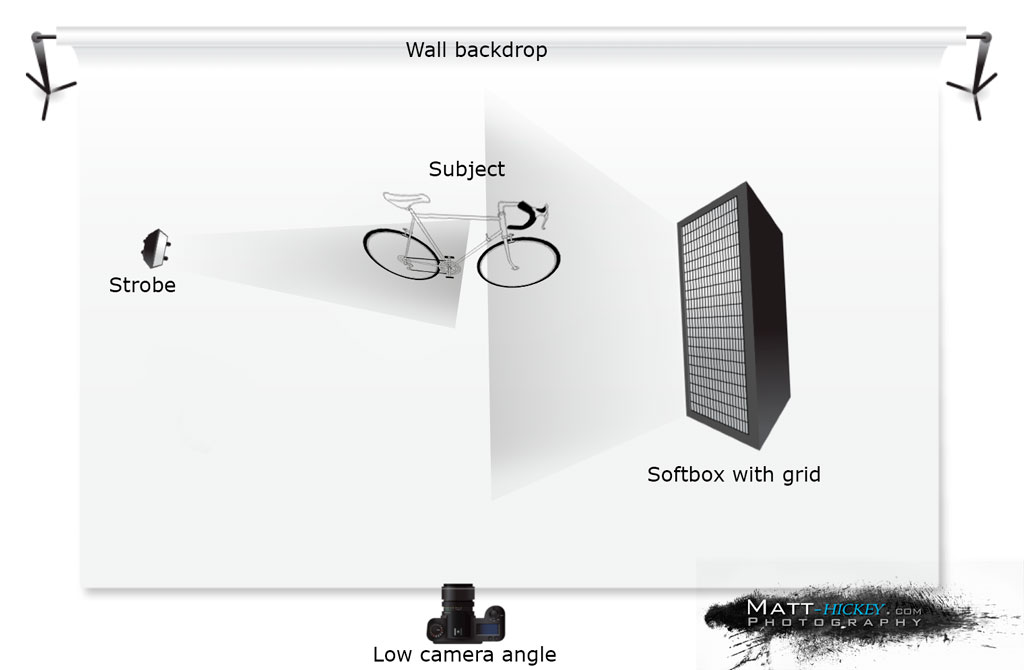
Initial lighting setup for Healing bike shoot
The test shots were looking good however the front wheel was falling into darkness because the soft-box wasn’t strong enough to light it and the left strobe was zoomed in and unable to send a wider light to it without spilling onto the wall and casting shadows.
I added the second kicker strobe (also zoomed in to focus the beam of light) and pointed it directly at the front wheel. This gave the extra defining light I needed to separate the bike from the background.
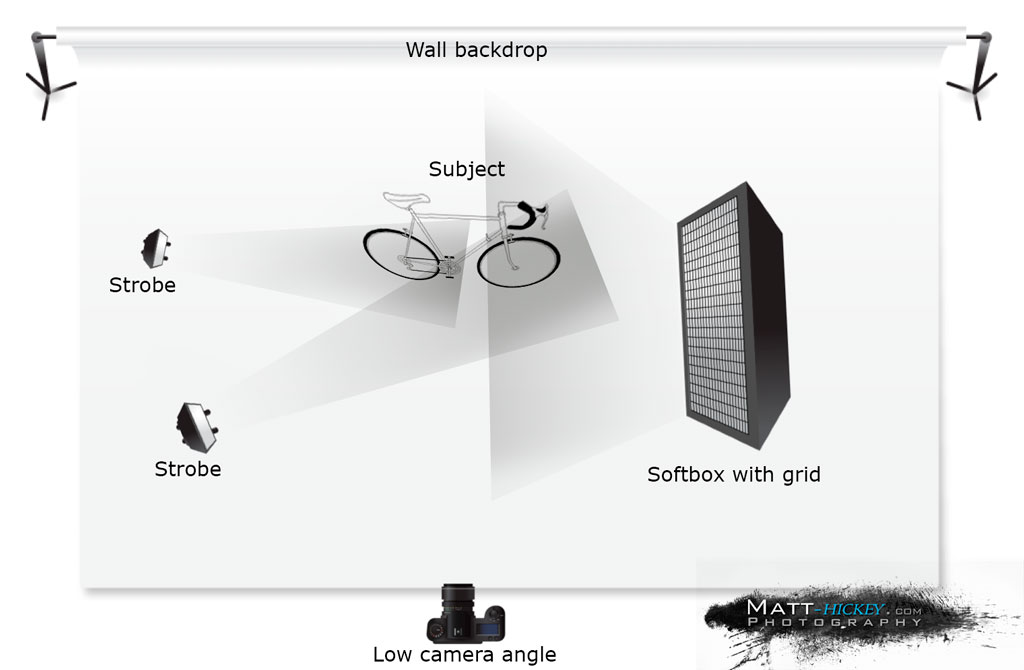
Final lighting setup for the blue Healing bike shot
With some minor levels adjustments, progressive blurring and using the patch tool to remove some distracting elements, here’s the resulting image.
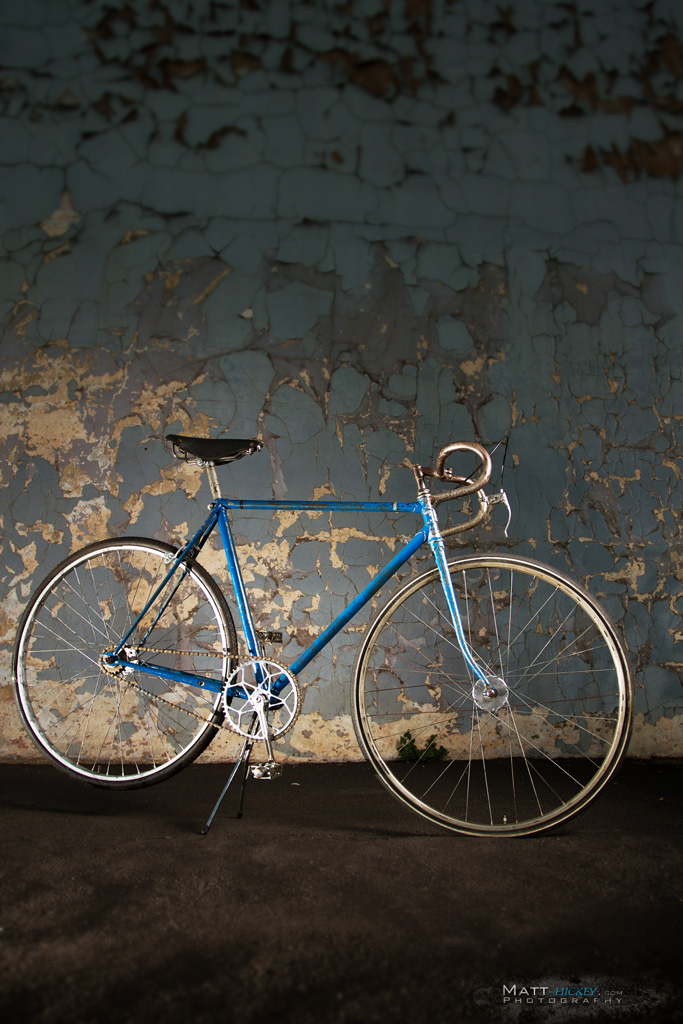
Final shot for Healing bike shoot

